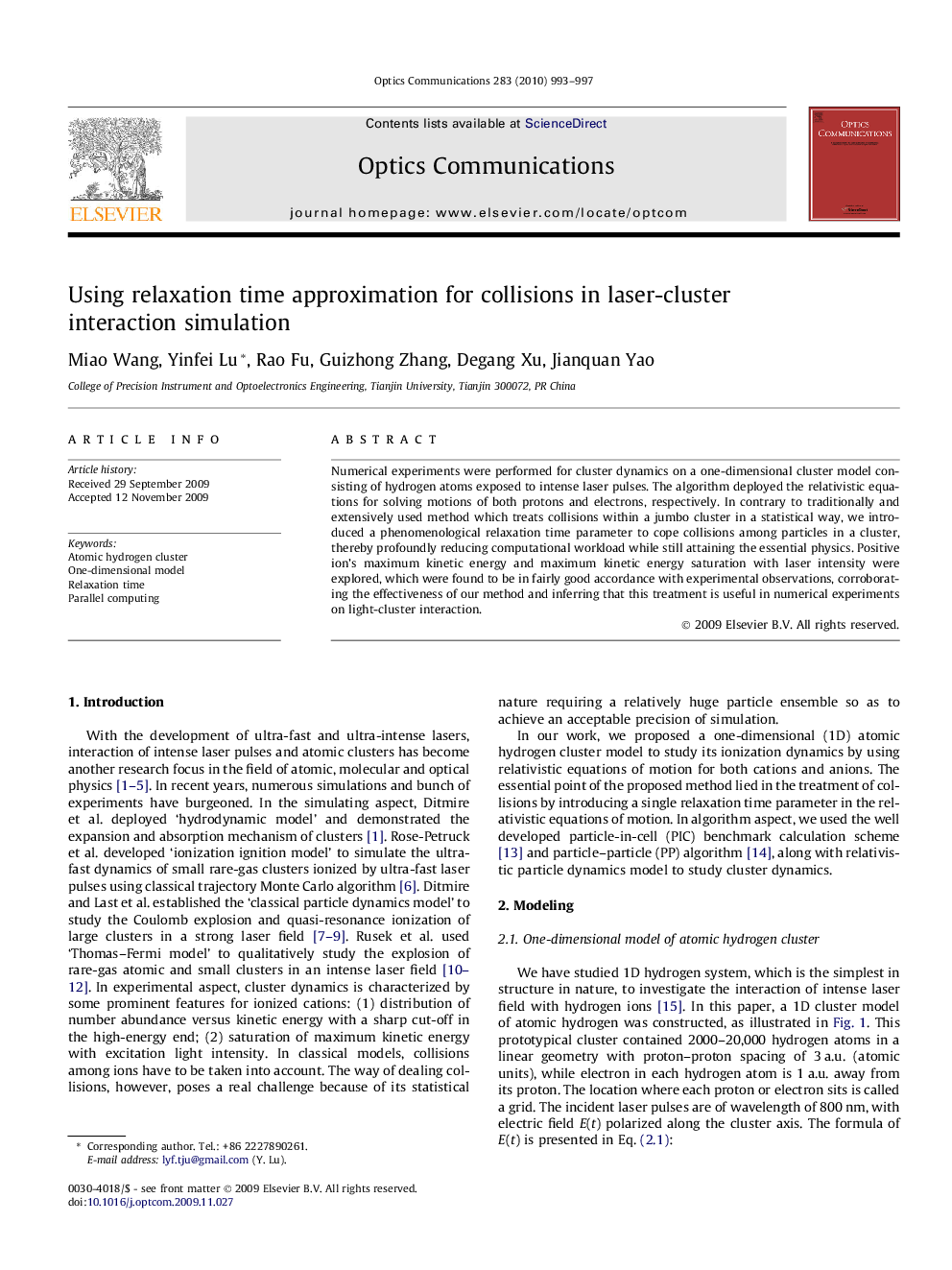| Article ID | Journal | Published Year | Pages | File Type |
|---|---|---|---|---|
| 1539496 | Optics Communications | 2010 | 5 Pages |
Abstract
Numerical experiments were performed for cluster dynamics on a one-dimensional cluster model consisting of hydrogen atoms exposed to intense laser pulses. The algorithm deployed the relativistic equations for solving motions of both protons and electrons, respectively. In contrary to traditionally and extensively used method which treats collisions within a jumbo cluster in a statistical way, we introduced a phenomenological relaxation time parameter to cope collisions among particles in a cluster, thereby profoundly reducing computational workload while still attaining the essential physics. Positive ion's maximum kinetic energy and maximum kinetic energy saturation with laser intensity were explored, which were found to be in fairly good accordance with experimental observations, corroborating the effectiveness of our method and inferring that this treatment is useful in numerical experiments on light-cluster interaction.
Related Topics
Physical Sciences and Engineering
Materials Science
Electronic, Optical and Magnetic Materials
Authors
Miao Wang, Yinfei Lu, Rao Fu, Guizhong Zhang, Degang Xu, Jianquan Yao,
